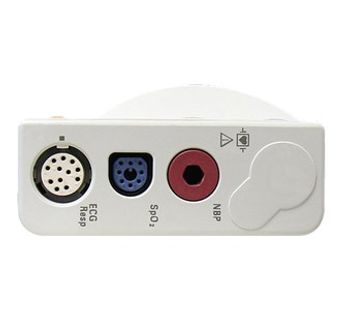Philips - M3001A MMS Module
by Philips


Module
philips M3001A MMS Module Option A01. The Philips M3001A Multi-Measurement Module (MMS) is for use with the Philips IntelliVue (MP20-MP90) and M-Series (M3046A) Patient Monitors. The MMs Provides measurement data for Electrocardiogram (ECG)/Arrhythmia/ST, Respiration, Oxygen Saturation (SpO2), Non-invasive Blood Pressure (NBP), and Invasive Pressure or Temperature. Its integrated version of Philips FAST-SpO2 Pulse Oximetry Technology is compatible with all sensors. The MMS sends processed measurement data to the monitor screen, generates alerts, and supports the transfer of patient data between monitors. An MMS Extension can optionally be attached to Multi-Measurement Module to add a combination of the following possible parameters: Mainstream and Side Stream CO2, Invasive Blood Pressure, Temperature and Cardiac Output. M3001A MMS Module with Options A01-A04 / CO6-C18
0Replies2 years ago | M3001A Module Compatibility Good morning, I wonder if M3001A MMS module with serial number prefix DE907 is compatible with an IntelliVue MP70 monitor hardware revision B.00.18 and software revision M.03.03. Current compatibility matrix charts I've found don't list the M software revision which is the reason I'm asking here. Thanks, Jack Equipment: Philips - M3001A MMS Module Reply |
6Replies5 years ago | Compatibility Good evening, I wonder if there is a compatibility list available for the Philips M3001A mms module. I have a IntelliVue MP30 monitor with hardware A.00.21 and software F.01.43 revisions and what version Of MMS I need to look for. Thanks in advance! TomReply |
1Reply5 years ago | Asystole Troubleshooting Here are some troubleshooting steps for when a nurse cannot get a heart rate readout from an ECG waveform, or the monitor continuously alarms for Asystole. 1) Choose the ECG numeric, then find Adjust Size in the pull down. When you do this it may be set to 2x, 3x, or 4x . Increasing size does not help the monitor to analyze the signal. The signal as it is analyzed by the monitor is always at X1. Set the size to X1. This will give you a better picture of what is actually happening . The signal is typically very small size; one the system cannot get a good reading off of. This issue is more likely seen with an e edematous patient or the thin leathery skin elderly type. It is difficult to get a good signal due to the type of skin. 3) Instruct the nurse do a mild dermabrasion. Attempt to clear the skin of oil or loose skin. 4) Ask the nurse to replace the patches. Ensure the patches are within their expiration date, and the package has not been opened for more than 24-48 hours. 5) If the signal is still weak, try switching to single lead analysis. This can be done from the central or bedside. Search through all of the available lead selections for one than has the best and strongest signal. Reply |
| Weight | 3 lbs |